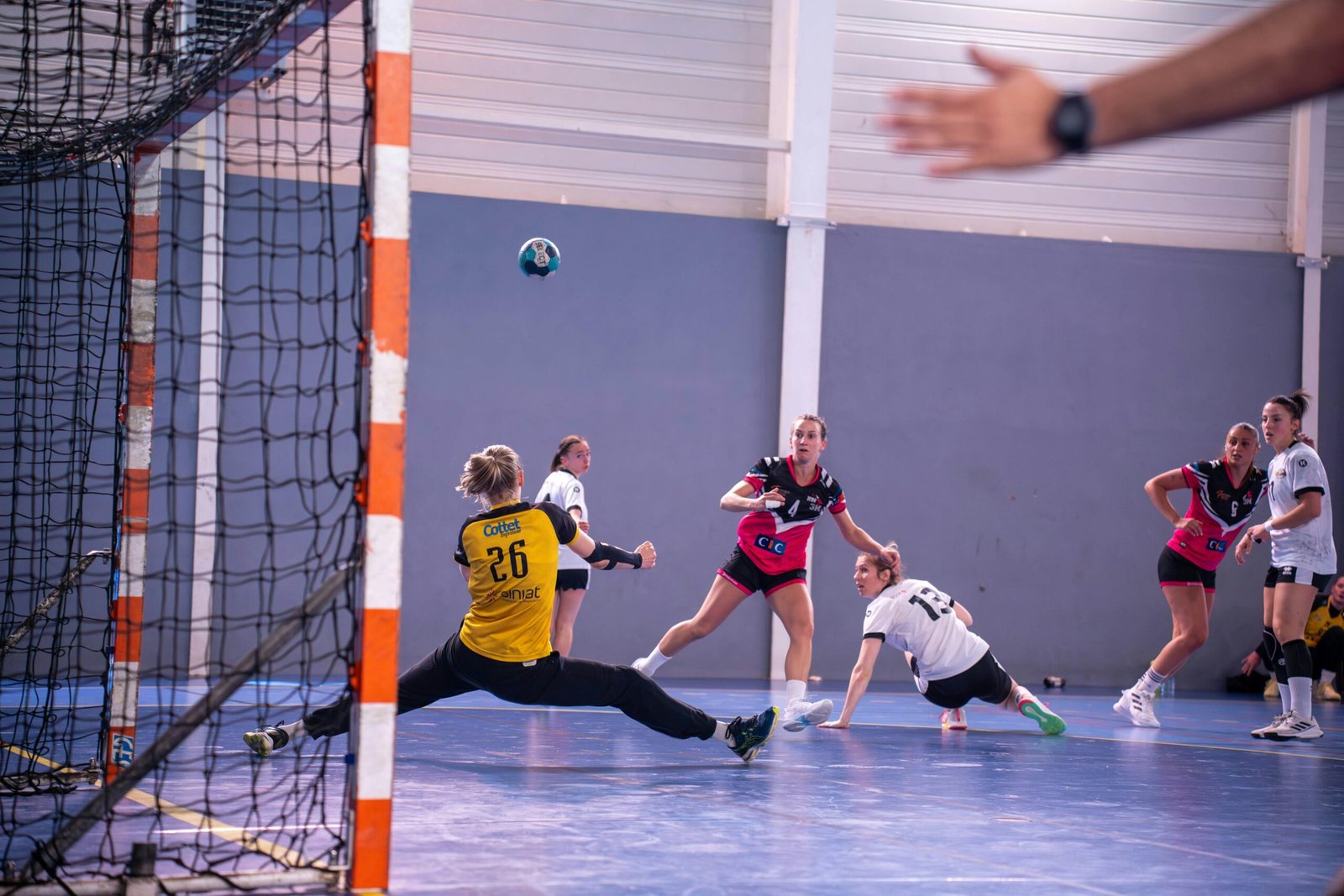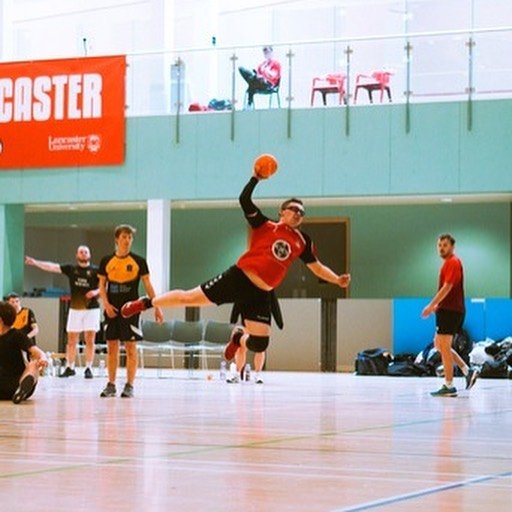The 3-2-1 defence is one of the most aggressive and disruptive defensive systems in handball. Designed to force turnovers, limit attacking options, and create fast-break opportunities, this formation relies on high intensity, coordinated movement, and intelligent positioning. In this blog, we will break down the structure of the 3-2-1 defence, explain each player’s role, explore its advantages and disadvantages, and provide tips for executing it effectively.
What is the 3-2-1 Defence?
The 3-2-1 defence positions players in three defensive lines.
- First line (3 players): Positioned around the 9-metre line, their job is to pressure attackers, block passing lanes, and force opponents into less favourable areas of the court.
- Second line (2 players): Positioned between the first line and the 6-metre zone, these players support the first line by intercepting passes, helping in one-on-one situations, and closing space quickly.
- Third line (1 player): The deepest defender, typically the defensive leader, covers the pivot and protects the goal area while coordinating the entire defensive unit.
This setup aims to push attackers wide, limit clear shooting opportunities, and create mistakes that can be exploited on the counterattack.
Player Roles in the 3-2-1 Defence
First Line Defenders
The three defenders on the front line are the first point of contact with the attacking team. They apply constant pressure to ball carriers, actively engage in one-on-one battles, and disrupt rhythm by forcing attackers to change direction or pass early.
Key responsibilities:
- Aggressively close down space
- Maintain active arms to block passing lanes
- Communicate with teammates to ensure full coverage
Second Line Defenders
The two defenders behind the first line provide balance and support. They must be quick to react, moving forward to intercept passes or dropping back to support the central defender.
Key responsibilities:
- Provide cover when first-line defenders are bypassed
- Watch for attacking runs from the backcourt or wing
- Intercept quick passes into the pivot
Central Defender (Third Line)
The lone defender closest to the goal is the anchor of the defence. Often the most experienced player, they read the game, anticipate movements, and direct defensive adjustments.
Key responsibilities:
- Mark and neutralise the pivot
- Communicate instructions to keep the shape intact
- Protect the 6-metre line from breakthroughs
Advantages of the 3-2-1 Defence
- High Pressure on the Attack: The advanced positioning forces opponents into rushed decisions.
- Increased Steal Potential: Passing lanes are actively contested, creating interception opportunities.
- Counterattack Opportunities: Quick turnovers can lead to fast-break goals.
- Flexibility: Can quickly adapt into other defensive shapes like 6-0 or 5-1 when needed.
Disadvantages of the 3-2-1 Defence
- High Energy Demand: Players must maintain constant movement and pressure, which can be tiring.
- Vulnerability to Fast Passing: Well-organised attacks with quick ball movement can exploit the space between defenders.
- Requires Strong Communication: Without consistent communication, defensive gaps can open quickly.
Tips for Mastering the 3-2-1 Defence
- Prioritise Communication – Defenders must talk constantly, especially when switching marks or closing space.
- Train Aggressive Footwork – Quick lateral movement helps defenders maintain pressure without fouling.
- Work on Interceptions – Anticipating and reading passes is crucial for disrupting attacks.
- Conditioning is Key – High-intensity play requires excellent fitness levels to avoid late-game fatigue.
- Simulate Game Scenarios – Practice against various attacking patterns to refine reactions.
When to Use the 3-2-1 Defence
The 3-2-1 is best used when you want to disrupt an opponent’s flow, particularly against teams that rely heavily on structured plays and slower ball movement. It is also effective when your team excels in speed and stamina, allowing you to turn defensive pressure into quick goals.ons or designing plays, always consider the handedness advantage. role is key to mastering the game.



